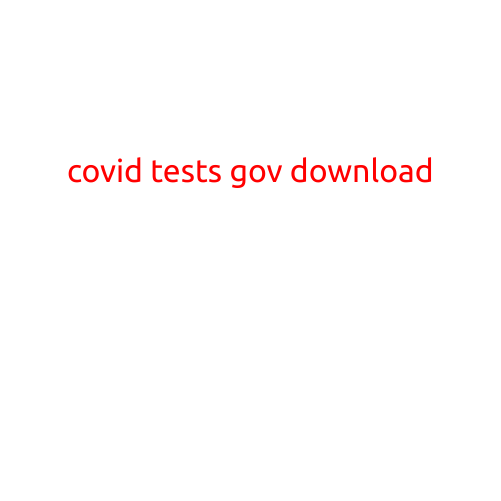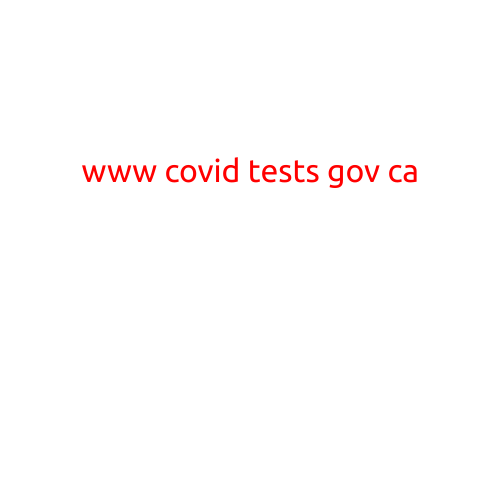
COVID-19 Tests: A Detailed Definition by the Government
The COVID-19 pandemic has brought about unprecedented challenges to global healthcare systems. One of the most critical tools in the fight against the virus is the COVID-19 test. But what is a COVID-19 test, and how does it work? In this article, we’ll explore the definition of a COVID-19 test, its types, and what to expect from the testing process.
What is a COVID-19 Test?
A COVID-19 test is a medical procedure that detects the presence of SARS-CoV-2, the virus that causes COVID-19, in an individual’s body. The test is designed to identify whether a person is infected with the virus, has had it in the past, or is still contagious. COVID-19 tests can be administered by healthcare professionals in various settings, including hospitals, clinics, and public health laboratories.
Types of COVID-19 Tests
There are several types of COVID-19 tests, each with its own unique characteristics and purposes. The primary types of tests are:
- Molecular Tests: These tests detect the genetic material of the virus in a person’s sample, such as a swab from the nose or throat. Molecular tests are considered highly sensitive and accurate, but may take a few days to produce results.
- Antigen Tests: These tests detect specific proteins on the surface of the virus. Antigen tests are rapid and can produce results in as little as 15 minutes, but may not be as accurate as molecular tests.
- Serological Tests: These tests detect antibodies in a person’s blood or serum. Serological tests can determine if a person has had COVID-19 in the past, but may not detect current infection.
- Rapid Diagnostic Tests (RDTs): These tests detect specific antigens of SARS-CoV-2 in a person’s sample. RDTs are rapid and can produce results in as little as 15 minutes, but may not be as accurate as molecular tests.
How COVID-19 Tests Work
COVID-19 tests work by detecting the presence of viral genetic material, proteins, or antibodies in a person’s sample. The sampling process typically involves:
- Nasal or Oral Swab Collection: A healthcare professional collects a sample from the person’s nose or mouth using a swab.
- Sample Preparation: The sample is prepared for testing, which may involve adding chemicals or other reagents to enhance the detection of viral genetic material or proteins.
- Testing: The prepared sample is then analyzed using a variety of methods, including PCR, ELISA, or immunofluorescence.
- Results Interpretation: The test results are analyzed and interpreted by a healthcare professional to determine whether the person is infected with SARS-CoV-2.
What to Expect from the Testing Process
When getting a COVID-19 test, it’s essential to follow the instructions of the testing facility or healthcare professional. Here are some general guidelines to expect:
- Appointments and Scheduling: Make an appointment with a healthcare professional or schedule an automated testing station.
- Sample Collection: A healthcare professional will collect a sample from your nose or mouth.
- Waiting Period: You may need to wait for the test results, which can take anywhere from a few minutes to several days.
- Results Interpretation: A healthcare professional will interpret the test results and discuss them with you.
- Follow-Up: If you test positive, you may need to self-isolate and receive medical treatment. If you test negative, you may still be required to follow public health guidelines to prevent the spread of the virus.
Conclusion
COVID-19 tests are a critical tool in the fight against the pandemic. Understanding what a COVID-19 test is, its types, and the testing process can help individuals feel more informed and prepared when getting tested. By following government guidelines and public health recommendations, we can Work together to stop the spread of COVID-19 and ensure a safer, healthier future for all.





